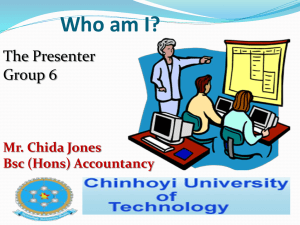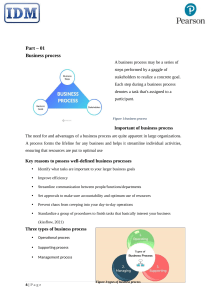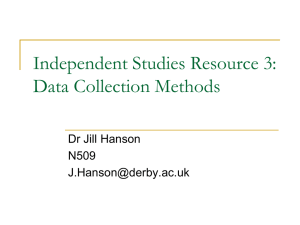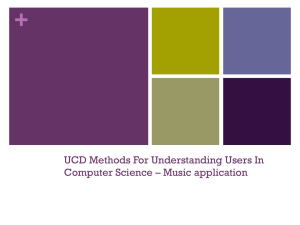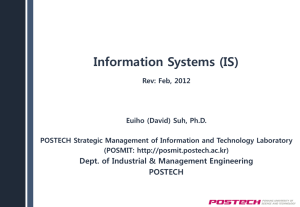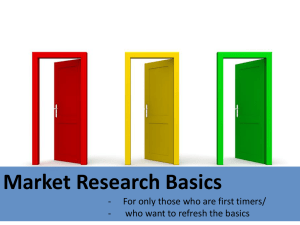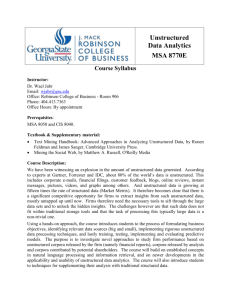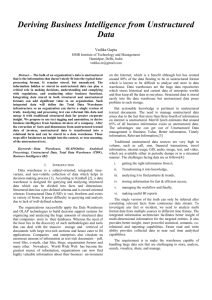Observations contextual inquiry
advertisement
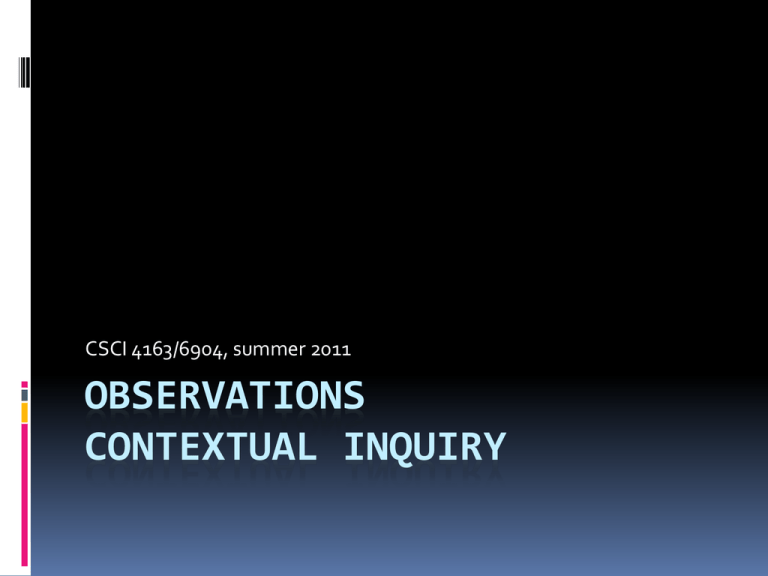
CSCI 4163/6904, summer 2011 OBSERVATIONS CONTEXTUAL INQUIRY Quiz Multiple choice Answer individually - pass in Then class discussion 11. Questionnaires... a. are a quick and easy way to gather information b. are only good for collecting qualitative data c. are only good for collecting quantitative data d. require thought and careful planning 2. If you want a high completion rate, you would administer the questionnaire: a. in person b. via (snail) mail c. via email d. using a web-based form 3. 3. Before sending out a questionnaire, you should make sure that: a. questions are worded clearly b. the questionnaire can be completed within the desired amount of time c. you can analyze the results d. all of the above 4. Which of the following is not an important aspect of a successful questionnaire? a. include only closed questions b. know what statistics you are going to run in advance c. do a pilot questionnaire d. include only understandable, clear questions 5. Interviews are: a) Verbally asking participants questions b) Hearing their point of view in their own words c) Both A & B d) Neither A nor B 6. Which type of interview allows you to probe participants’ responses? A) Structured B) Unstructured C) Semi-Structured D) Unstructured and Semi-Structured 7. Which type of interview allows you to quantitatively compare responses? A) Structured B) Unstructured C) Semi-Structured D) Unstructured and Semi-Structured 8. Active listening is… A) Making a conscious effort to hear the words a person is saying B) Making an effort to understand the complete message being sent C) Paying attention to the other person very carefully D) All of the above Exercise Research topic: Rituals of on-line information seeking behaviour Questions: What types of information sources are regularly checked? Is it a push or pull paradigm? What is the frequency? What prompts a session to begin? How long does a session usually last? What brings a session to an end (time? Information found? All sources seen?)? Is there multi-tasking? Observation Watching people, programs, events, communities, etc. Used to: Provide information about real-life situations and circumstances Assess what is happening Valuable because you cannot rely on participants’ willingness and ability to furnish information When is observation useful? When you want direct information When you are trying to understand an ongoing behaviour or process When there is physical evidence, products, or outcomes that can be readily seen When other data collection methods seem inappropriate Observations Advantages Disadvantages Most direct measure of May require training behavior Provides direct information Easy to complete Saves time (?) Can be used in natural or experimental settings Observer’s presence may create artificial situation Potential for bias Potential to overlook meaningful aspects Potential for misinterpretation Difficult to analyze (If unobtrusive…) Can see things in their natural context Can see things that may escape conscious awareness, things that are not seen by others Can discover things that may have been taken for granted Can learn about things that people might not be willing to talk about Low potential for generating observer effects Major limitations Potential for bias Observer bias Cultural bias (during observation and interpretation) Reliability Ease of categorization Often used in combination with other methods to provide a more thorough account Types of observation Structured (looking for) Unstructured (looking at) Observing what does not happen may be as important as observing what does happen Planning Determine who/what to observe Determine what aspects will be observed (characteristics, attributes, behaviours, etc.) Determine when/where observations will be made Develop the observation record sheet Pilot test the observation record sheet Train the observers, practice Collect information, analyze and interpret Observations need to be credible Observation guide Recording sheet Checklist Field notes Pictures Video Some combination of the above Ecological validity Is what you are observing representative of usual behaviours? Unobtrusive? Task? Setting? Tools? If unobtrusive… Can be hard to understand why…. Contextual inquiry Interviewees are interviewed in their context, when doing their tasks, with as little interference from the interviewer as possible. Allows probing of “why?” Can be real-time or record interesting actions for later discussion “Typical” 4 phased approach Traditional interview Get an overview, establish trust, start recording Switch to a master-apprentice relationship Tell them what you want to observe Make sure to establish when ok to interrupt Observe, ask questions Take notes Balance need to understand with impact of interruptions Summarization Go over observations and your understanding with participant Make sure that you go it right Other ways of providing context If natural observation not possible, can ask them to demonstrate specific tasks of interest Can provide task scenarios and ask them to perform “Think aloud” aloud protocols Other ways of getting observational data Logging Screen recording (check out Camtasia) Trace data Homework Advertising Diary exericise for Thurs Assigned reading w/ questions for Thurs Read McGrath’s Methodology Matters (submit questions) for Tues

